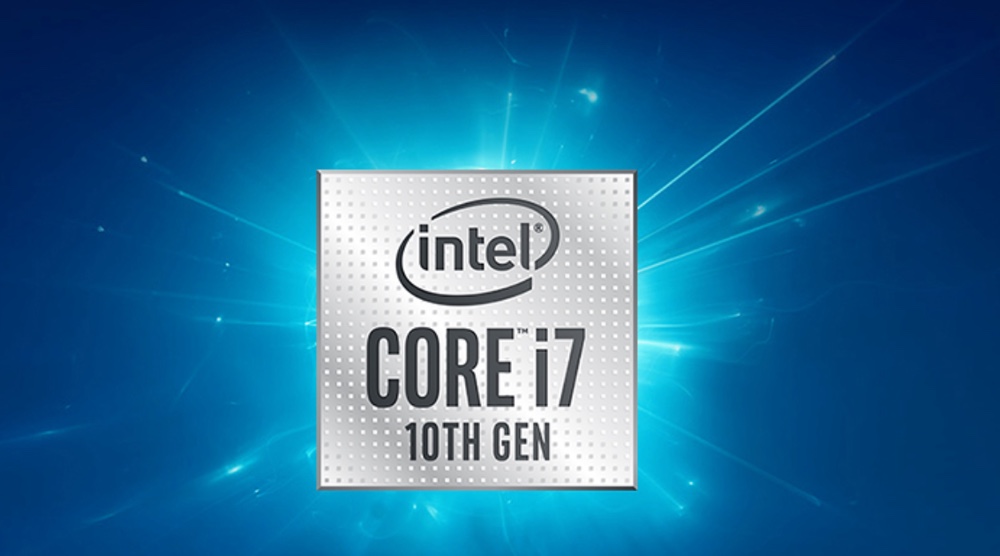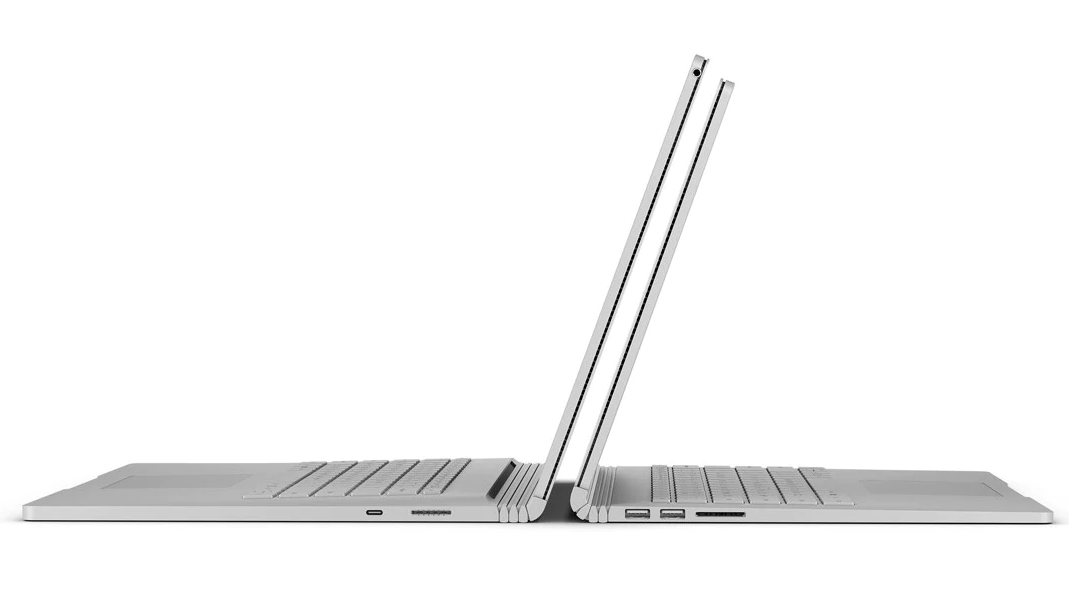Microsoft’s Surface lineup is the perfect place to look at if you want a compact laptop that isn’t a MacBook. However, in most cases smaller, portable laptops come at the cost of performance. This is because of the smaller form factor as manufacturers can’t fit beefed-up hardware in a limited space. So if you want a compact machine, does that mean you’ll always have to compromise on performance? Well, no.
The new Microsoft Surface Book 3 is here to cater to that niche requirement. This device offers a compact size paired with powerful internals and has the ability to become a tablet if you want it to. It seems as if the Surface Book 3 is the Jack of all Trades, but does that mean it’s the Master of None? Let’s take a detailed look at its specs to find out.
Design

Before we start, it’s important to note that the Surface Book 3 comes in 13 inch and 15 inch screen variations. However, keeping true to the portability aspect of the device, we’ll only be talking about the 13 inch variant in this review. The whole device has a Magnesium construction, which makes it look and feel premium without the additional weight.
Open the lid and you’ll find yourself facing the display on the upper clamshell. The bezels are not the smallest but they’re symmetrical meaning that the chin and forehead are of the same size. Above the display, you have the 5MP 1080p front-facing camera that’s Windows Hello supported. Move to the lower clamshell and you’ll just find a backlit chicklet style keyboard with a trackpad below it and that’s just about it.

The biggest party trick of the Surface Book 3 is the fact that it can transform into a tablet. It has a unique hinge design that allows the upper clamshell to completely detach from the base. Because of this all of the essential hardware and controls are kept in the display part of the laptop which makes it top heavy. However, the larger battery and the Graphics Card are in the base, which means you’ll compromise on performance and battery life while using it as a tablet.
Looking at the back of the Surface Book 3, you have a pretty minimalist design. You just have the Microsoft logo in the center and there’s a second 8MP 1080p Autofocus rear camera. These secondary cameras are becoming popular in 2-in-1 laptops/tablets and the idea behind them is to be able to take pictures of the board in class. In addition to that, you have the power button and the volume rocker on the top.
Performance

As mentioned earlier, what makes the Microsoft Surface Book 3 different from other small, 2-in-1 laptops is the amount of performance you can get with it. You have two CPU/GPU options in the 13 inch variant. They are:
- 10th Gen Intel® Core™ i5-1035G7 CPU / Intel® Iris™ Plus Graphics GPU
- 10th Gen Intel® Core™ i7-1065G7 GPU / 4GB GDDR5 NVIDIA GeForce GTX 1650 Max-Q GPU
While both processors offer the latest and greatest performance, it’s pretty evident the latter is the one to go for if you want the best out of your Surface Book 3. The addition of the discrete NVIDIA Graphics card offers you more versatility with the device as you can use it for heavy editing and even light gaming.
As far as RAM and Storage are concerned, you get some limited options to choose from but they can be substantial for a power user. The following configurations are available:
- 8GB LPDDR4x RAM / 256GB PCIe SSD (Core i5)
- 16GB LPDDR4x RAM / 256GB PCIe SSD (Core i7)
- 32GB LPDDR4x RAM / 512GB PCIe SSD (Core i7)
- 32GB LPDDR4x RAM / 1TB PCIe SSD (Core i7)
- 32GB LPDDR4x RAM / 2TB PCIe SSD (Core i7)
As you can see here if you really want to go beyond 8/256GB, you’ll have to upgrade to the Core i7 variant, which will eventually add up to the cost.

The display of the Surface Book 3 is a 13.5” 3000 x 2000 multi-touch PixelSense™ panel. The first odd thing about this display is the resolution. Unlike most laptop displays, this one doesn’t have traditional 4k or 1080p resolutions. Instead what you get is a resolution slightly lower than 4K but pretty close (267 PPI). Another odd thing is the aspect ratio, which is kept 3:2 instead of the traditional 16:9 so that it doesn’t seem weird while using it as a tablet.
Lastly, we come to the battery. Now, Microsoft hasn’t given us any details regarding the battery type or capacity used in the Surface Book 3. What we do know, however, is that there are two battery modules in this device. A smaller one in the display portion and a larger one in the keyboard base. While connected to the base, Microsoft claims that the Surface Book 3 can give up to 15.5 hours of “typical device usage”. This does seem too good to be true but it’s obvious that a power user will get much less than that.
Connectivity

Being a small, portable, 2-in-1 modern laptop, you don’t get many ports with the Surface Book 3. The one’s you do get are:
- 2x USB-A (version 3.1 Gen 2)
- 1x USB-C® (version 3.1 Gen 2 with USB Power Delivery revision 3.0)
- 3.5mm headphone jack
- 2x Surface Connect ports (one on the keyboard base, one on the tablet)
- Full-size SDXC card reader
As far as wireless connectivity goes, you get:
- 802.11ax compatible WiFi
- Bluetooth Wireless 5.0
Price & Verdict
All of this sounds tempting but unfortunately, it comes with a hefty price. The Microsoft Surface Book 3 starts at an eye-watering $1599.99. Allow me to remind you that that’s just for the base model with an i5 CPU, integrated graphics, 8GB RAM, and 256GB storage. As you work your way up to the highest trim level, you’re looking at $3399.99.
That makes this more expensive than the most expensive MacBook pro without Apple’s brand name to make you feel better about your purchase. However, if we are to look at the bright side of things, the Surface Book 3 offers a lot more than the MacBook Pro in terms of Raw performance and usability. Unfortunately, that also means that this device is reserved only for those who can afford the hefty price tag.


